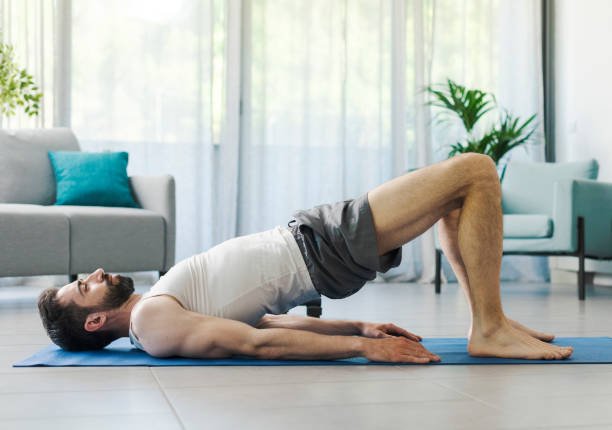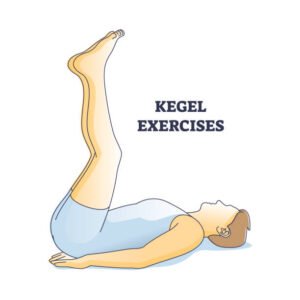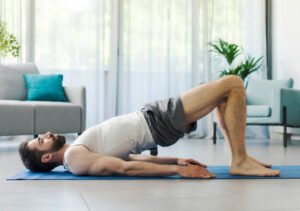Discover the benefits of Kegel exercises for men, including improved bladder control, enhanced sexual performance, and better core stability. Learn how to perform Kegel exercises correctly and incorporate them into your daily routine for optimal results.

Kegel Exercises for Men: A Comprehensive Guide to Strengthening Pelvic Floor Muscles
When it comes to fitness and health, most men focus on building muscle, improving cardiovascular health, or losing weight. However, one area that often goes overlooked is the pelvic floor. Kegel exercises, traditionally associated with women, are equally beneficial for men. These simple yet powerful exercises can improve bladder control, enhance sexual performance, and even contribute to better core stability. In this comprehensive guide, we’ll explore everything you need to know about Kegel exercises, including how to perform them correctly and the benefits they offer.
What Are Kegel Exercises for Men?
Kegel exercises are named after Dr. Arnold Kegel, who first developed them in the 1940s to help women strengthen their pelvic floor muscles after childbirth. However, over time, it became evident that these exercises are equally beneficial for men. The pelvic floor is a group of muscles and tissues that support the bladder, rectum, and other pelvic organs. Strengthening these muscles can lead to a host of health benefits.
Why Should Men Do Kegel Exercises?
While Kegel exercises are often associated with women, men can reap significant benefits from incorporating them into their fitness routine. Here are some of the key reasons why men should consider doing Kegel exercises:
- Improved Bladder Control: As men age, they may experience urinary incontinence, especially after prostate surgery. Kegel exercises can help strengthen the muscles that control urination, reducing the risk of leaks and improving bladder control.
- Enhanced Sexual Performance: Strong pelvic floor muscles can lead to better erectile function and more intense orgasms. Kegel exercises can also help with premature ejaculation by improving muscle control.
- Better Core Stability: The pelvic floor is an integral part of the core muscles. Strengthening these muscles can improve overall core stability, which is essential for good posture and injury prevention.
- Post-Prostate Surgery Recovery: Men who have undergone prostate surgery often experience urinary incontinence. Kegel exercises can aid in recovery by strengthening the pelvic floor muscles and improving bladder control.

How to Identify Your Pelvic Floor Muscles
Before you start doing Kegel exercises, it’s essential to identify the correct muscles. Here’s a simple way to locate your pelvic floor muscles:
- The Stop Test: The next time you urinate, try to stop the flow midstream. The muscles you use to do this are your pelvic floor muscles. Once you’ve identified them, you can perform Kegel exercises without interrupting urination.
- The Mirror Test: Sit or stand in front of a mirror and try to lift your penis without moving your legs, abdomen, or buttocks. If you see movement, those are your pelvic floor muscles at work.
How to Perform Kegel Exercises for Men
Once you’ve identified your pelvic floor muscles, you’re ready to start doing Kegel exercises. Here’s a step-by-step guide:
- Find a Comfortable Position: You can perform Kegel exercises while sitting, standing, or lying down. Choose a position that’s comfortable for you.
- Contract the Muscles: Tighten your pelvic floor muscles as if you’re trying to stop the flow of urine. Hold the contraction for 3-5 seconds.
- Relax the Muscles: Release the contraction and relax your muscles for 3-5 seconds.
- Repeat: Aim for 10-15 repetitions per session. As you get stronger, you can increase the duration of the contractions and the number of repetitions.
- Consistency is Key: For best results, perform Kegel exercises 3-4 times a day. It may take several weeks to notice significant improvements, so be patient and consistent.
Advanced Kegel Exercises for Men
Once you’ve mastered the basic Kegel exercises, you can try more advanced variations to further strengthen your pelvic floor muscles:
- Quick Flicks: Instead of holding the contraction, quickly squeeze and release your pelvic floor muscles. Aim for 20-30 quick flicks in a row.
- Elevator Kegels: Imagine your pelvic floor muscles are an elevator. Slowly contract the muscles in stages, as if the elevator is rising floor by floor. Hold each stage for a few seconds before releasing.
- Bridge Pose with Kegels: Lie on your back with your knees bent and feet flat on the floor. Lift your hips into a bridge position while performing a Kegel contraction. Lower your hips and release the contraction. Repeat 10-15 times.
Common Mistakes to Avoid
While Kegel exercises are relatively simple, some common mistakes can reduce their effectiveness:
- Holding Your Breath: It’s important to breathe normally while performing Kegel exercises. Holding your breath can create unnecessary tension in other parts of your body.
- Using the Wrong Muscles: Make sure you’re contracting your pelvic floor muscles and not your abdomen, thighs, or buttocks. If you’re unsure, revisit the identification techniques mentioned earlier.
- Overdoing It: While consistency is important, overdoing Kegel exercises can lead to muscle fatigue. Stick to the recommended number of repetitions and gradually increase as your strength improves.
Incorporating Kegel Exercises into Your Daily Routine
One of the best things about Kegel exercises is that they can be done anywhere, anytime. Here are some tips for incorporating them into your daily routine:
- Set Reminders: Use your phone or a calendar to set reminders to do your Kegel exercises throughout the day.
- Combine with Other Activities: You can perform Kegel exercises while brushing your teeth, watching TV, or even during your commute.
- Track Your Progress: Keep a journal to track your progress. Note any improvements in bladder control, sexual performance, or core stability.
The Benefits of Kegel Exercises for Men: A Closer Look
Let’s delve deeper into the benefits of Kegel exercises for men:
- Improved Bladder Control: As men age, the pelvic floor muscles can weaken, leading to urinary incontinence. Kegel exercises strengthen these muscles, helping to prevent leaks and improve bladder control.
- Enhanced Sexual Performance: Strong pelvic floor muscles can lead to better erectile function and more intense orgasms. Kegel exercises can also help with premature ejaculation by improving muscle control.
- Better Core Stability: The pelvic floor is an integral part of the core muscles. Strengthening these muscles can improve overall core stability, which is essential for good posture and injury prevention.
- Post-Prostate Surgery Recovery: Men who have undergone prostate surgery often experience urinary incontinence. Kegel exercises can aid in recovery by strengthening the pelvic floor muscles and improving bladder control.
Frequently Asked Questions About Kegel Exercises for Men
- How long does it take to see results from Kegel exercises?
It can take several weeks to a few months to notice significant improvements. Consistency is key, so make sure to perform the exercises regularly. - Can Kegel exercise help with erectile dysfunction?
Yes, Kegel exercises can improve blood flow to the pelvic area, which may help with erectile dysfunction. However, they should be part of a comprehensive treatment plan. - Are there any risks associated with Kegel exercises?
Kegel exercises are generally safe, but overdoing them can lead to muscle fatigue. If you experience pain or discomfort, stop the exercises and consult a healthcare professional. - Can I do Kegel exercises if I’ve had prostate surgery?
Yes, Kegel exercises are often recommended for men recovering from prostate surgery to help improve bladder control.
The Science Behind Kegel Exercises: Why They Work for Men
Understanding the science behind Kegel exercises can help you appreciate their effectiveness and motivate you to stick with your routine. The pelvic floor muscles, which form the base of the pelvic cavity, play a crucial role in supporting vital organs like the bladder, rectum, and prostate. These muscles are also involved in sexual function and core stability.
How Kegel Exercises for Men Strengthen the Pelvic Floor
When you perform Kegel exercises, you’re essentially engaging in resistance training for your pelvic floor muscles. Just like lifting weights strengthens your biceps, contracting and relaxing the pelvic floor muscles increases their endurance and strength over time. This improved muscle tone can lead to better control over urinary and bowel functions, as well as enhanced sexual performance.
The Role of Blood Flow
Kegel exercises also promote better blood circulation to the pelvic region. Improved blood flow is essential for maintaining healthy erectile function and can help reduce the risk of erectile dysfunction (ED). For men recovering from prostate surgery, increased blood flow can aid in healing and restore normal function more quickly.
Neuromuscular Coordination
Another benefit of Kegel exercises is improved neuromuscular coordination. By regularly contracting and relaxing the pelvic floor muscles, you train your brain to better control these muscles. This can lead to quicker reflexes, such as the ability to prevent urine leakage when you cough or sneeze.
Hormonal Benefits
While Kegel exercises primarily target the muscles, they can also have indirect effects on hormone levels. For example, improved sexual performance and confidence can lead to higher levels of testosterone, which is essential for overall male health.
Long-Term Benefits
The long-term benefits of Kegel exercises for men are well-documented. Men who consistently perform these exercises often report:
- Fewer instances of urinary incontinence.
- Improved sexual satisfaction.
- Better posture and core strength.
- Faster recovery after prostate surgery.
By understanding the science behind Kegel exercises, you can see why they are such a valuable addition to any man’s health routine. Whether you’re looking to address specific issues or simply improve your overall well-being, these exercises offer a range of benefits that go beyond the obvious.
Conclusion
Kegel exercises for men are a simple yet effective way to improve bladder control, enhance sexual performance, and strengthen core stability. By incorporating these exercises into your daily routine, you can enjoy various health benefits and improve your overall quality of life. Remember to start slow, be consistent, and avoid common mistakes to get the most out of your Kegel workout. Whether you’re looking to recover from prostate surgery, improve your sexual health, or simply strengthen your pelvic floor muscles, Kegel exercises are a valuable addition to any fitness routine.







